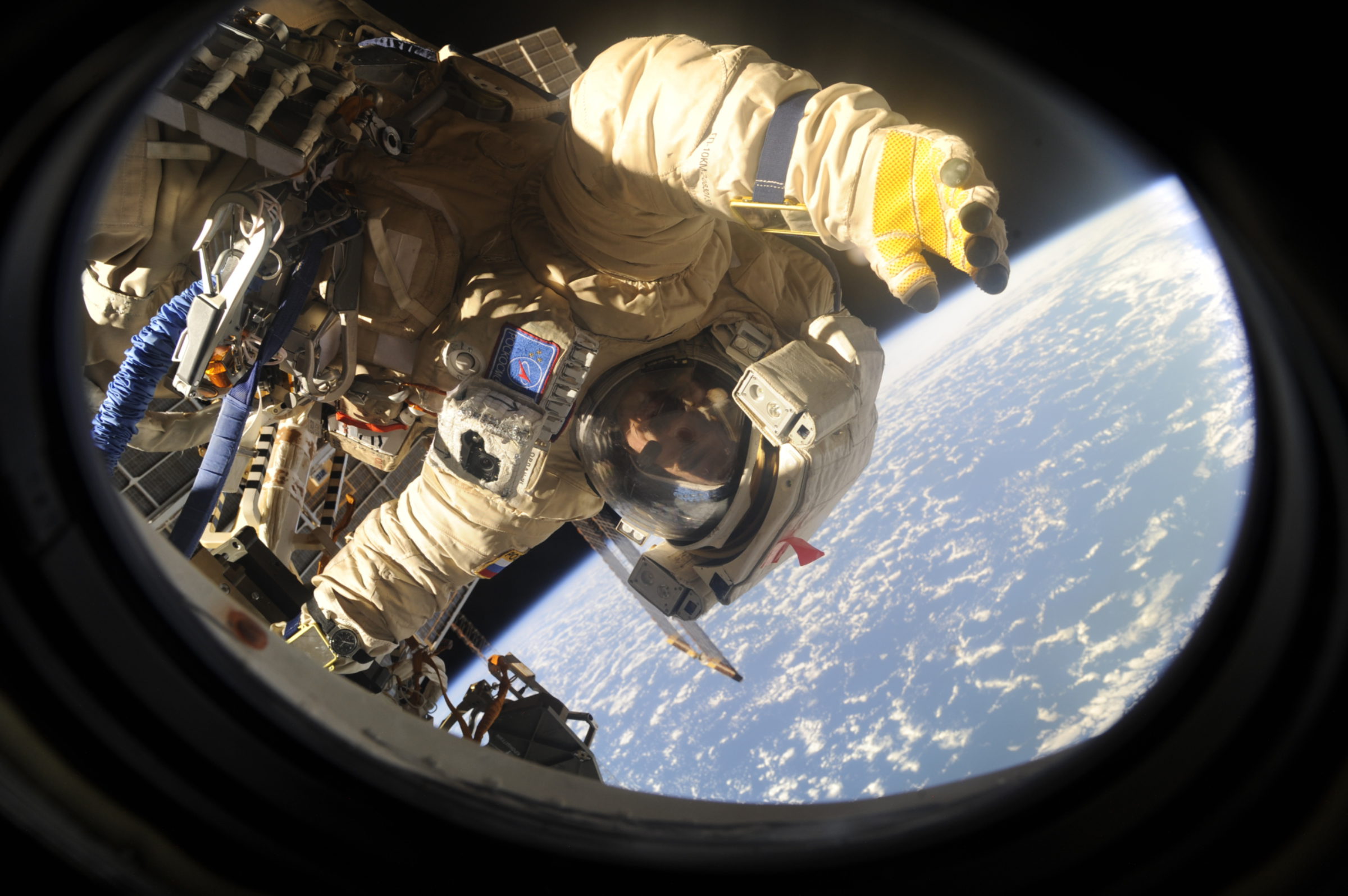Jason Davis • Aug 15, 2016
Russia may lower its ISS crew complement from three to two
Russia is considering lowering its International Space Station cosmonaut crew complement from three to two.
The story appeared in the Russian newspaper Izvestia on Thursday, August 11, and quoted cosmonaut Sergei Krikalev, who serves as the head of piloted space programs for Russia's state-run space corporation, Roscosmos.
NASA officials confirmed the news today during a televised press briefing at Johnson Space Center.
"They're exploring the option of going down to two crew on the Russian segment,"said ISS operations integration manager Kenneth Todd, responding to a question from collectSPACE.com editor Robert Pearlman. "We'll look at it as we do with all these kind of things—we'll trade it against whatever risk that might put into the program, first and foremost the risk to our crew onboard, and the station itself."
"From there, we start looking at the options and see what we can do as a partnership to either accomodate it or help them realize why that's a bad thing,"Todd said. "But at this point, it's strictly a proposal that they put on the table and we'll look at it."

Russia's standard crew size has been three since Expedition 23 in 2010. The Izvestia article, citing a previous interview with Sergei Krikalev, said Russia may have originally intended to increase its crew size only after the arrival of its delay-stricken science section, the Multipurpose Laboratory Module.
The MLM is currently expected to arrive no earlier than late 2017, and has a long, complicated history dating back to an original launch date of 2007.
The proposal comes at a time of financial hardship for Roscosmos, which was recently given a ten-year budget of about $20.5 billion—barely more than NASA receives in a single year. Russian economic hardships, caused by falling oil prices and the country’s annexation of Crimea, forced officials to slash the space corporation’s budget by 60 percent, down from a once-proposed top line of $50.4 billion.
At the same time, SpaceX and Boeing are on the verge of transporting NASA astronauts to the ISS, which will end America’s reliance on the Soyuz spacecraft. That will end a lucrative seat-purchasing arrangement for the Russians.
Three-person Soyuz crews currently fly to the station about four times per year. The crew roster typically alternates between two cosmonauts and one NASA astronaut, or one cosmonaut, one NASA astronaut and a third astronaut from another international partner.
After SpaceX and Boeing are flying at full capacity, Roscosmos could, in theory, make just two Soyuz flights per year. Additionally, if international partners begin using American commercial crew vehicles, the third Soyuz seat could be used for cargo, tourists, or other potential international partners—including China.
Russia is currently committed to partnering with the U.S. for the ISS program through 2024.
"One thing that we certainly always keep in the back of our mind is that our Russian partners are committed to the program at least through 2024,"said Todd. "They're no doubt they're keeping that in mind as they work through whatever challenges they have within their system."
Let’s Go Beyond The Horizon
Every success in space exploration is the result of the community of space enthusiasts, like you, who believe it is important. You can help usher in the next great era of space exploration with your gift today.
Donate Today

 Explore Worlds
Explore Worlds Find Life
Find Life Defend Earth
Defend Earth

